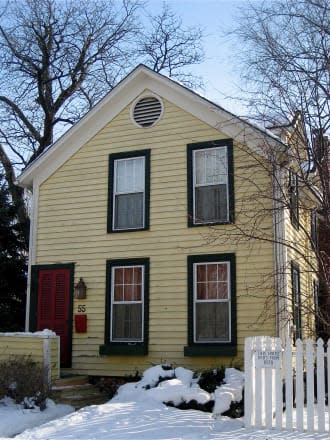Housing Market Overstocked With Older Homes

By Cybele Weisser
If you are in the market for a new home, you have probably noticed that almost all the houses in your local listings are anything but new. According to a recent survey from research firm RealtyTrac, 71 percent of U.S. single-family homes were built before 1990. In some states, particularly in the Northeast, pre-1990 houses make up 80 percent of recent sales.
Experts say the new-home drought is mainly due to a hangover from the real estate bust. Homebuilding, which practically came to a halt five years ago, has been slow to restart as big developers have remained skittish. New-home construction this year is still 40 percent below normal long-term levels, says Jed Kolko, chief economist at real estate website Trulia.com. Furthermore, builders have focused on multifamily homes, and individual buyers have not had access to all the new single-family houses coming to market.
"Wall Street-backed money has scooped up newer homes to use as rental properties," said Daren Blomquist, vice president of RealtyTrac. "That's pushed the already-low new-home inventory down to record levels."
Sara Winter and her husband had to scratch a new home off their list when they searched for their first house in the New Jersey suburbs last year. Still, the couple found it an easy tradeoff. "In the areas we were looking, it's either very old or brand new, and the new would cost hundreds of thousands more," says Winter, who in June moved into a Scotch Plains, N.J., house built in 1953. "We were willing to do some updating, and older homes have charm."
According to RealtyTrac, the average pre-1990 home recently sold for 9 percent less than a newer one in the same market. In areas like Cleveland, Pittsburgh and Detroit, where there are big supplies of older homes, the differences were even more marked: These houses cost less than half what newer ones fetch.
The age of the home and its location factor into its price, too. Pre-1940 houses tend to be ample in size and often have features buyers associate with old-world charm, such as sweeping staircases, exposed brick and crown molding. Particularly in gentrified areas of large cities such as Boston and Houston, homes built in the early 1900s often command a premium to more contemporary ones, notes Kolko. By contrast, postwar-era homes tend to have cookie-cutter designs and features that have gone out of fashion. And the average house built in the 1940s lacks closet space and is nearly 50 percent smaller than today's typical new home.
Rehab Isn't Free: If you are willing to do some major layout rehab on an older place, you may get a great bang for your buck. But remember that this will raise your cost of ownership and that older houses tend to be more expensive to own anyway. Total first-year costs of homeownership, consisting mainly of line items like fuel and maintenance but excluding mortgage payments, are 23 percent lower for new homes than for those built before 1960, according to a study by the National Association of Homebuilders.
"That's assuming you don't have to make any major fixes," says study author Paul Emrath, the association's vice president of survey and housing policy research. Even a minor remodel on an older kitchen, including cabinet refacing, countertops and mid-range appliances, costs an average of $18,000, according to Remodeling magazine.
If you are in the market for an older abode, here are a few guidelines to follow:
Know when to walk away. Signs of water damage or mold in the basement? Pass on the place, says Michael Corbett, Trulia's real estate expert and author of "Before You Buy," a handbook for home shoppers. "Make sure things are dry as a bone and are going to stay that way," he says. Termites and structural issues, such as cracks in the foundation, are also extremely costly to fix.
Do the walk-through with your inspector. Many buyers hang back during the inspection. Big mistake, says Corbett. "It's like going to the doctor and not being present during the examination," he says. "This is your only real chance to find out what the house is about." Besides bringing any red flags to your attention, the inspector should be able to give you a ballpark figure for what it will cost to tackle more minor repairs.
Budget for energy-efficient upgrades. Fuel costs represent a large share of the extra expenses of an older home, says Emrath. Investments in new insulation and an energy-efficient furnace or air-conditioning unit will pay for themselves and then some in the long run.
Plan for a few big expenses. Even a 10-year old home is probably going to need some modifications, like new appliances or carpeting. But if you buy a home that was built more than two decades ago, you are probably looking at costly fixes such as new heating and cooling systems, plumbing and a roof in the near future, if not immediately.
"These kind of repairs are usually baked into the purchase price," says Corbett, "It's a question of whether a buyer is willing to take them on."
The author is a Reuters contributor. The opinions expressed are her own.
More on the housing market:
Finding a Dream Home at a Detroit Auction
5 Ways to Win the Home You Want
Winning in a Seller's Housing Market
SIZABLE HOMES IN SMALLER MARKETS, FOR UNDER $100,000:
More on AOL Real Estate:
Find out how to calculate mortgage payments.
Find homes for sale in your area.
Find foreclosures in your area.
Find homes for rent.
Follow us on Twitter at @AOLRealEstate or connect with AOL Real Estate on Facebook.
